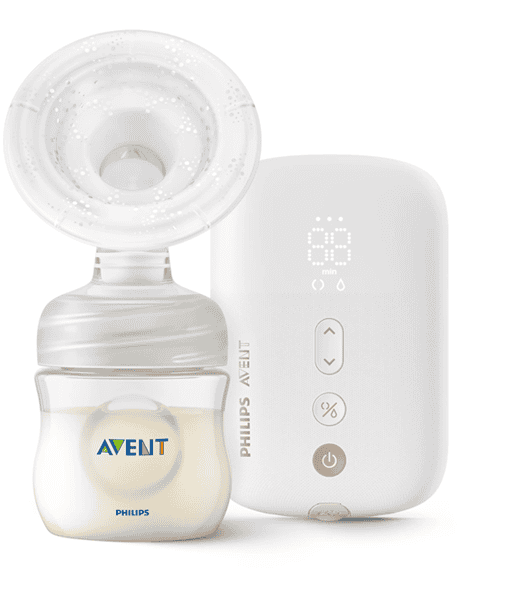Breastfeeding can be a challenge especially for new mothers and Philips Avent has launched the new Electric Breast Pump inspired by baby’s natural feeding process. The new Philips Avent Electric Breast Pump helps mothers embrace every challenge in the breastfeeding journey and to love every moment, while encouraging more mothers to breastfeed their babies.
There are many advantages of breastfeeding that will benefit both the mother and baby. It provides the ideal amount of nutrients, easily digested and absorbed to protect and help your baby fight off viruses and bacteria. For the mothers, breastfeeding helps mothers to recover from childbirth, to lose weight, encourages uterine contractions, promotes bonding and more.
Our team speaks to Dr. Wong Boh Boi, she is a renowned lactation expert who has helped over half a million parents in Singapore. She will share about the benefits of breastfeeding, useful tips for successful breastfeeding, getting the right tools to help mothers realize their breastfeeding goals and more.

Image Credit to Dr. Wong Boh Boi
Exclusive Interview with Dr. Wong Boh Boi, Renowned Lactation Expert
1. Are there any trends in breastfeeding that you’re seeing with Singaporean mums?
While breastfeeding is a rewarding and beautiful journey, it’s not always easy. A lot of women following their maternity leave often times may prefer not to breastfeed, either because they are busy working, experiencing discomfort, or because they want their partner to be involved in the process.
As a result, many are looking for a breast pump that allows them to express comfortably and discreetly, helping them to enjoy a convenient breastfeeding experience and achieve their breastfeeding goals.
2. What are some advantages of breastfeeding, for mums and babies?
Breastfeeding brings with it many benefits for both mum and baby. It can lower the risk of osteoporosis. When lactating, your body is more efficient at absorbing calcium. This means that even though your spine and hip bones may be less dense at weaning, they will eventually be denser than what they were before pregnancy, effectively lowering your risk of osteoporosis during menopause.
Breastfeeding can also enhance the bond with your baby. This is by far one of the biggest benefits of breastfeeding your baby. You get to enjoy moments of intimate bonding that cannot be experienced in any other place. As your baby breastfeeds, the two of you exchange looks, cuddles, and communicate with each other. Watching your baby grow on your breast milk is going to give you a deep feeling of fulfillment, more than you’ve ever experienced.
It is also a great way to lose weight gained during pregnancy milk production can burn up to 500 calories a day. Therefore, you are going to have an easy time losing pregnancy weight if you are breastfeeding.
3. How early should mums start to prepare for breastfeeding, and how can mums prepare for it?
The hormonal changes pregnancy brings to breasts are sufficient preparation for most women. Additionally, there are myths that one should “toughen” their nipples as preparation. This is false and will only lead to soreness. If anything, teaching your baby the right way to latch on to your breast from the beginning is the most effective way to prevent soreness. Mums can also choose to massage their breasts from 36 weeks onwards (not any earlier because this can induce labour) and also start to clean the nipple ducts from blockage or residue (dried colostrum or soap residue etc). Getting a nursing bra for ease of feeding and extra support would also be a good idea, but remember, It’s best to wait till milk has kicked in, before shopping for nursing bras to get the most accurate size..
4. Can you share some tips for successful breastfeeding?
A major factor to successful breastfeeding is how well baby is latching on. It is good practice to start latching your baby as soon as possible after delivery. Babies should have skin-to-skin contact with mums immediately after birth, preferably within five minutes, for an hour or so. After 30 minutes, you might notice your baby showing readiness to feed and can latch on from there. You will be surprised that a lot of babies can self-latch that early. The first latch is always the most important.
A major factor to successful breastfeeding that can be guaranteed early on is how well baby is deeply latching on as well as how well mum is holding and positioning baby. There are a few signs to tell if a baby is latching well during breastfeeding. A good latch is pain-free. It should feel like a tugging from the vacuum suction of baby’s latch. Another good sign that your baby has latched onto enough breast tissue is the fullness of their cheeks. You will not be able to see the base of your nipple, only the outer edge of your areola.
Once a mother’s milk has kicked in, the rhythm should be 1-2 sucks and then the sound of swallowing. This is for the most effective latching. Lastly, when your baby is correctly attached to the breast, the nipple should be round, or as it was before the feed. A sharpened or pinched nipple (similar to a lipstick) is a sign that your little one has not taken enough breast into their mouth.
5. What are some essential items that mums should include as part of their personal breastfeeding kits?
When it comes to expressing away from home, ensure that you pack well so you can go about your day with confidence. Here’s a list of essential items:
• Breast pump – opt for an battery-powered pump if you need to express frequently
• Bottles or airtight containers for collecting milk
• Labels for writing the date and contents
• Breast pads
• Cooler bag with ice pack for taking milk home
• Nursing shawl or cover for discreet pumping
Additionally, you will also need a space to safely store your milk. Also, the best place to express is a room where you will not be disturbed and feel relaxed.
You will need to store the milk safely after expressing. Here are some basic guidelines so no breast
milk goes to waste:
• Store milk in an airtight container
• Label clearly with the date and the contents of the bottle
• Refrigerate immediately if possible or
• Store in a cool bag with an ice pack if you will be out for more than 4 hours
6. What is the difference between electric and handheld pumps? Which would you recommend for a successful breastfeeding journey?
Both breast pumps, handheld manual or electric, can lead to a successful journey. Handheld pumps are good for when a mother is tight on space and does not want to have to worry about electronically operated equipment. That being said, the current electric breast pumps are very efficient, quiet and useful when a mother needs to express relatively hassle-free, especially if she is returning to the workforce and is continuing to breastfeed.
7. How long would you recommend mums to breastfeed per-session? Is there a golden period in the day for mums to express breast milk?
An efficient nursing session should take up to 30 minutes (15 minutes on each side). Do not necessarily look at time but follow other signs such as the adequacy of emptying the breasts by the baby. However, as newborn babies are often sleepy, this length of time may fluctuate.
Mother’s milk supply is at its peak early in the day because she has rested through the night. Schedule an expressing session for the morning or after your first feed of the day if you are combining nursing with bottle feeds. The best time to express milk is after you nurse. For mums who combine expressing with breastfeeding, adding an expressing session onto the end of a feed can be an easy way to collect any extra milk that your baby did not finish.
Remember, allow yourself to get comfortable. If you are new to expressing, do not feel like you must express a whole feed on the first go. The amount you can express will increase as you relax and get used to pumping.
8. What can partners do to support mums on their breastfeeding journey?
Breastfeeding is more successful when family members are involved. Research has shown that partners are the biggest influencers of breastfeeding success. Partners can support by comforting, feeding and checking up on baby, especially at night. Partners can also give massages, offer hot drinks and offer to run errands. Some simple offloading of tasks and planning for visits can help to impact a mother’s mood which also improves breastfeeding experience. They can also learn about crucial breastfeeding items like the breast pump and be involved in cleaning and readying these items for the next feeding. It is important for a partner to be tactful and a cheerleader to mother.
At the same time, family and friends have an important role to play by providing much needed emotional support. Along with family members, friends can provide tremendous support by simply listening. New mums may not always be looking for advice because what they really need is someone who can listen to what it is like to be a mother.
9. What are some tips you have for mums returning to work and want to continue breastfeeding?
As mentioned earlier, make sure you pack an efficient personal breastfeeding kit and that you have a personal and peaceful space in which to express such as a personal office or a nursing room. I would recommend an electric breast pump for hassle-free expression during pockets of free time at work. Remember to also have ways to store this milk!
It is recommended to start pumping before returning to work, at least 2 weeks before to get your body and mind accustomed to pumping without baby. Do remember not to pump for too long, as 20-25 minutes should be sufficient to empty breasts of milk.
When back at work, continue feeding your baby before and after work. Store expressed breastmilk
sealed in a sterilized airtight container and chilled at a consistent temperature. How long it lasts will depend on where you store it. Breast milk is pretty durable provided that it is sealed in a sterilized airtight container and chilled at a consistent temperature.
• Refrigeration – up to 5 days at 4°C or lower
• Freezer (in fridge) – up to 2 weeks
• Freezer (separate compartment) – up to 6 months
A cooler bag is a good alternative if there is no freezer or refrigerator. Do remember to organize the containers with dates so no milk goes to waste. Storing milk in the office fridge is fine as long as the milk is stored in an airtight container or in breastmilk pouches. If you are worried about food contamination in the fridge, simply store the milk inside a separate bag.
10. Could you share advice on how mums can maintain their milk supply?
To keep supply up, do feed your baby as often as possible during the confinement period to establish milk production in the initial six to eight weeks.
I recommend initiating breastfeeding as soon as possible after delivery. You can stimulate more breastmilk supply by doing a gentle breast massage before feeding and ensure that the baby is latching well. Frequent feeding helps as well, and getting the correct latch is the most crucial part. Once the baby latches correctly, they will receive more milk and you will start producing more milk as well. Suitable food supplements can also help to enhance milk production.

Image Credit to Philips Avent Electric Breast Pump
It is very important to choose the Breast Pump that is right for you and your baby, the new Philips Avent Electric Breast Pump uses natural motion technology for quicker milk flow, enables mothers to express more milk in lesser time. It comes with a soft, one-size-fits-all silicone cushion which gently collapses and adapts to a mother’s changing nipple size and shape during the nursing journey. It is specifically designed for a quiet and discreet experience, so mothers can feel confident expressing anywhere.
The new Philips Avent Electric Breast Pump features a quiet motor, compact and lightweight design and a rechargeable battery. It is easily portable to let mothers express on the go, while the intuitive memory function and automatic transition from stimulation to expression enables hassle free use. The Philips Avent Electric Breast Pump is available at the Philips e-store at the regular retail price of S$259 and at all Philips-authorized retailers. For more information, please visit https://www.philips.com.sg/.
Find out more about the new Philips Avent Electric Breast Pump at https://www.philips.com.sg/c-p/SCF396_11/avent-electric-breast-pump.




